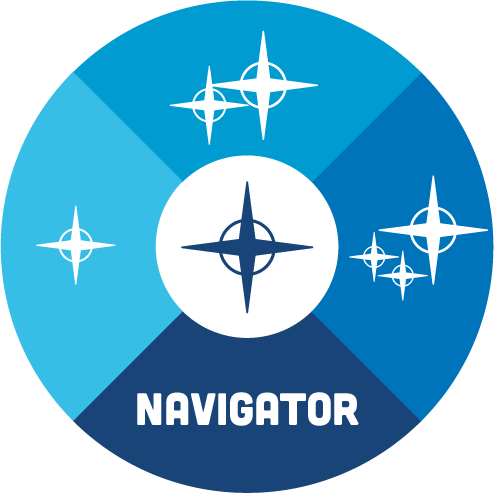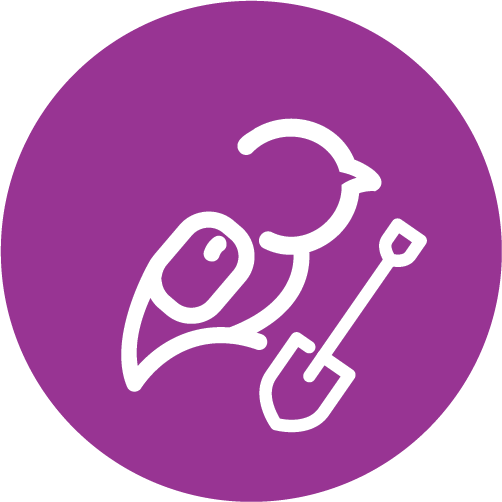
 What is Wellness?
What is Wellness?
Well-being is an overall state of happiness, health, and the sense that your life is going well. It encompasses many different aspects of your life such as your physical health, relationships, career, and environment. All of these aspects of your life are connected and affect how happy you are.
It is crucial to understand that wellness is not merely the absence of illness or distress. Wellness is a lifelong process of making decisions to live a more balanced and meaningful life. A good way to enhance your wellness is by evaluating your current state and establishing systems to guide you towards a fuller sense of well-being.
The Global Wellness Institute defines wellness as “the active pursuit of activities, choices, and lifestyles that lead to a state of holistic health.”

Why Does Wellness Matter to Students?
Students’ health and well-being contribute to their ability to learn in all disciplines including health and physical education. This learning, in turn, contributes to overall well-being. Providing students with the skills to research and analyze knowledge is key to making healthy choices and informed decisions. As a result, students recognize and change their own behaviours as they become critical consumers of health information.
 The Wicked Problem – Captain Depresso by Laura Little
The Wicked Problem – Captain Depresso by Laura Little
A story about the struggles of being on your own.
The Wicked Problem
I was diagnosed with depression at the age of 16 and post-secondary schooling has been difficult in many ways. I started out going to Trent university straight out of high school for honours science with the intention of transferring to the nursing program the following year. I loved the campus and the courses I was taking. However, my mental health got the best of me. I spent many nights alone in my residence room crying and wanting to go home. By December I had already applied to the nursing program at various colleges closer to my hometown of Parry Sound. During the Christmas break, I decided to drop out of school and move home to better my mental health. Although I am an introvert, I found the isolation of post-secondary to be taunting. There were times when I wouldn’t leave my dorm room for days at a time and nobody would check in on me, not even my roommates. After this experience, I was hesitant to continue my education at Cambrian College although I was living with a friend and knew it was closer to home. I continued to struggle mentally and physically. For my physical health, I found it difficult to eat healthy in a dorm room. There was no stove or oven to cook with so it was difficult not to eat Mr. noodles every day. Most cafeteria food is also not very healthy so that did not help.
Finding a Solution
I still struggle with being on my own however I have come up with strategies to overcome that. I have come up with various ideas to better my physical and mental health without the help of others. For example, developing a meal plan helps me to eat healthier and ensures that I do eat more than once a day. also, coming up with a workout plan and taking time for myself each day can help mentally. I have also tried journaling to work through my emotions. For anyone struggling with depression or feeling isolated I would recommend making sure you talk to at least one person each day face to face, even if it is just the cashier at the grocery store. I would also recommend forcing yourself to go outside and maybe go for a short walk each day.
Final Thoughts
I would like to emphasize that every post-secondary institution has many resources available for their students no matter what they are struggling with. it is important to reach out and ask for help if you need it. There is no shame in struggling with any aspect of school even your mental health.
APA Reference
Little, L. (2021, October 20). Captain Depresso. Liberated Learners. https://wicked.liberatedlearner.ca/collaborator/captain-depresso/
 Activities: Navigate Wellness and Support
Activities: Navigate Wellness and Support
By the end of these activities, you will be able to identify strategies to support wellness, disabilities, and mental health concerns
- Recognize the signs and symptoms of when you need help
- Identify short-term strategies you can use now to address your immediate needs
- Identify long-term strategies that you could use in the future to keep you afloat
Level 1 – Eight Dimensions of Wellness
What can I do to help myself?
Task: Recognize your own personal areas of wellness to become aware of where you are thriving and where you need to focus your attention.
Time Commitment
This activity may take between 45 and 60 minutes to complete.
Steps to Complete
Well-being Assessment
Introduction
Are you wondering what areas of well-being you are thriving in and which might need attention? This assessment will help you to improve your own well-being.
Instructions:
- Answer all the questions for each of the eight wellness dimensions. You can answer the questions here: https://plato.algonquincollege.com/ac-library/lp/wellbeing-assessment/story.html. [1]
- View your scores to see where you can improve. We would also suggest writing them down or taking a screen shot of your results if you want to keep track of your responses.
- Complete a Wellness Guide action plan using the Your Wellness Guide from Princeton’s UMatter. You can write your answers on the page and then download the guide (choose download “with your changes”).
Feedback for your scores in each Wellness Dimension:
Scores of 20-28: Outstanding! Your answers demonstrate that you’re already taking positive steps in this dimension of wellness. You’re improving your own well-being and also setting a good example for those around you. Although you achieved a high overall score in this domain, you may want to check for low scores on individual items to see if there are specific areas you might want to address. You might also choose to focus on another area where your scores weren’t so high.
Scores of 15-19: Your behaviours in this area are good, but there is room for improvement. Take a look at the items on which you scored lower. What changes might you make to improve your score? Even a small change in behaviour can help you achieve better health and well-being.
Scores of 14 and below: Your answers indicate some potential health and well-being risks. Review those areas where you scored lower and explore the related modules.
Dig Deeper
We have some extra resources. Like a lot of extra resources. If you want to dig deeper in any of the dimensions of wellness, you can find out more in the drop down below.
More Resources
- Well-being Hub – Eight Pillars of Wellness – The Learning Portal
- Financial Wellness – Financial wellness and developing financially-smart habits
- Intellectual Wellness – Encourages learning and inspires exploration
- Career Wellness– Activities and resources to help you develop your career wellness
- Physical Wellness – Activities and resources for physical wellness
- Social Wellness – Resources on relationships we have and how we interact with others
- Spiritual Wellness – Resources on seeking meaning and purpose in human existence
- Emotional Wellness – Inspires self-care, relaxation, stress reduction, and the development of inner strength
- Environmental Wellness – Live a lifestyle that is respectful of our surroundings
Success Checklist
You will know that you have successfully completed this activity when:
- You are aware of your own dimensions of wellness.
- You have identified a current list of needs and where to focus your attention.
- You have developed awareness of how your behaviours can help you achieve better health and well-being.
Level 2 – Recognizing Signs of Wellness in Others
How Can I Support a Peer, Family Member, or Friend?
Task: Read through the following scenarios and suggested responses. Identify if a scenario has applied to you or someone close to you. Formulate a plan for how you would respond if someone approaches you about one of these issues.
Time Commitment
This activity may take between 60 and 120 minutes to complete.
Steps to Complete
Part 1: Scenarios: Working alone or with a partner, choose one or two of the scenarios below and role play or discuss what you would say as a response.[2]
A student who is struggling to balance their studies with caring for their child
Alex is a single parent who is going to school full-time and is unable to find reliable daycare. The daycare on campus is full and Alex is on a waitlist; all the other community daycares are also full. Alex’s daughter, Gemma, is a toddler, and Alex is wary of leaving her with a stranger. Alex has no family in the area, and friends are unable to help as they either work or go to school themselves. With final exams coming up, Alex is having trouble finding time to study and feels options are extremely limited or non-existent. Alex tells you they have been trying to study while Gemma sleeps but cannot keep it up for much longer because they are feeling so sleep-deprived. Alex looks unkempt and has dark circles under their eyes; they look like they are about to cry and seem very stressed.
© Dagmar Devine (CC BY 4.0 license)
A student who is genderqueer and has just gone through a bad breakup
You have been paired up with Leslie on a semester-long project in one of your classes. Leslie is upfront about being genderqueer and asks you to use the pronouns they/them. Leslie is enthusiastic, shows up to all the meetings, and completes their portion of the work on time. However, as the semester progresses, Leslie begins missing meetings, is harder to get hold of, and is either late with their contributions or the work is subpar compared with their earlier submissions. When you ask if everything is okay, Leslie admits they are going through a bad breakup and is having a hard time handling it. They are having difficulty concentrating on their work, they aren’t sleeping well, and they are drinking a little more than usual. Leslie tells you they are thinking about dropping out and don’t know what to do.
© Dagmar Devine (CC BY 4.0 license)
An Indigenous student triggered by lesson content
You are in class when the instructor begins talking about Canada’s residential school system and the abuse and forced assimilation of Indigenous children. As the lesson closes and students begin to pack up, you notice that a usually gregarious Indigenous student is sitting quietly and appears to be wiping tears from their eyes. When you approach the student, they tell you that their grandmother was in a residential school and they found the lesson very triggering.
© Jenny Guild (CC BY 4.0 license)
A homeless student misses study group
You are part of a study group that has been meeting regularly throughout the semester. Recently, one member’s attendance has become sporadic. When they do show up, their appearance is dishevelled, and they seem to have a hard time concentrating. When you ask them about this, they confide that they have been evicted from their apartment and must live in their car for a few weeks until they can afford a deposit on a new place. They explain that it’s hard to find a quiet and comfortable place to study or sleep, and their coursework has suffered as a result. They also tell you that they feel a lot of stress and shame about the situation.
© Jenny Guild (CC BY 4.0 license)
A transgender student who needs support with a culturally unsafe instructor
Alexa, a transgender student, approaches you after a LGBTQ2S+ meetup on campus. She tells you that one of her instructors refuses to call her by her name, stating that “preferred names” are optional as per school policy. Occasionally, the instructor will use Alexa’s name, but will self-edit; for example, calling her “Alex” instead of “Alexa.” The student feels disrespected and humiliated by her instructor during class, so if she does attend class she sits in the back and doesn’t participate very much. She explains to you that she needs to do well in the course so she can get into the program she wants. She expresses feelings of sadness, hopelessness, and frustration during this interaction.
© Arica Hsu (CC BY 4.0 license)
An engineering student who appears anxious and rushes out of class
Your classmate usually sits at the very back of your engineering class and keeps to themselves. Today they arrive late, and you notice them taking one of the remaining seats at the busy centre of the lecture hall. Other classmates are engaged in loud conversations with one another. Your classmate appears to become anxious. You notice them frantically shuffling their bodies. As additional classmates fill up the remaining seats, your classmate hastily grabs their belongings and runs out of the class, sweating profusely. You decide to follow them out of class to see how they’re doing. When you talk to them, they tell you that they were just anxious and needed to get out of the room to relax.
© Hamza Islam (CC BY 4.0 license)
An international student who is not able to pay fees
An international student you know from classes is not able to pay all their fees for the semester. The student tells you that they didn’t get any kind of financial aid. They discussed their situation with their parents, but they are not able to send money because their business was shut down during the pandemic. The student is really upset and appears to be on the verge of tears when they talk to you. They are worried they’ll have to drop out and say they feel helpless and very stressed.
© Mehakpreet Kaur (CC BY 4.0 license)
An international student feeling overwhelmed by academic and work commitments
Salem arrived in Canada three months ago and is struggling with absorbing school material in English. Salem has to work after classes to support their family, so there is no time for extra tutoring or study club. Because of late-night shifts, they are having trouble keeping a consistent sleep schedule and preparing meals for the week. Salem explains to you that they have a midterm exam coming up. Salem discloses to you that in their culture, grades play a large role in defining one’s self-worth and social status—and this exam is no exception. They are visibly distressed, their eyes swollen with dark circles underneath, and they mention their lack of appetite and lack of communication with their loved ones.
© Malena Mokhovikova (CC BY 4.0 license)
A student worried about failing a course and disappointing their family
Cobie is the first member of their family to attend a post-secondary program, and their parents and grandparents have invested most of their money in their education. Cobie has come up to you, as a teacher’s assistant, in a panicked way after class. They explain that they just got their mark back for an assignment, and they failed it and are unable to improve their mark. They will likely fail the class because of how much the paper was worth. The student is clearly panicking and displaying frantic behaviours like pacing, speaking rapidly, fidgeting with their hands, and being on the verge of crying. They say that they feel guilty for wasting their parents’ and grandparents’ money and are embarrassed to tell them that they failed on the paper. They say they feel helpless and stuck, with no way out of the situation.
© Jackson Mackenzie Nicholls (CC BY 4.0 license)
A student triggered by an instructor’s comments about weight and body image
Your friend Blue, who is recovering from an eating disorder, just ran out of class because of triggering course content. Blue is non-binary, queer, bi-racial, and neurodivergent. In class, the instructor was discussing nutrition, body image, and healthy eating when they made an implicitly offensive comment about weight and body mass index. This triggered Blue, causing them to run out of the classroom. You also leave class to check on them, and you find them pacing up and down the hallway, scratching their arms, and tugging at their shirt to pull it away from their body.
© Calla Smith (CC BY 4.0 license)
A student struggling to balance academic pressures with their social life
A student shows up to class after not coming for a couple of weeks. As everyone is packing up their bags at the end of class, you approach the student, who looks tired, is not wearing appropriate clothing for the cold weather outside, and looks like they may not have showered in a while. After talking privately with you in the empty classroom for a few minutes, the student discloses that they are hungover from a weekend of drinking. The student is clammy, sweaty, and breathing quickly. The student continues to tell you that they don’t want to be in school, but they’re under a lot of pressure from their family to be there. The student tells you that the only part of school they enjoy is the social aspect.
© Calla Smith (CC BY 4.0 license)
Part 2: Take a Moment To Think About Your Responses
Think about how you would respond to the one or two scenarios you have chosen. Alone or with a partner, write down or discuss what questions you would ask your peer, family member, or friend who is sharing their situation with you. Consider how you would show empathy and support, and what actions you may take after learning of their situation. Once you have identified some ideas, continue to the suggested responses below.
Part 3: How You Could Respond
Here are some of the suggested ways that you may wish to respond to your peer, family member, or friend.
Compare these suggested responses with the ideas you came up with alone or with a partner. What is similar? What is different? What would you change about your own responses after reading the suggestions? Below are two examples of responses from the link above.
Scenario 1: Student who’s struggling to balance studies with caring for their child
Possible response:
I can see you really care about your daughter and how important it is to ensure she is safe and well-cared for. I also see how hard you are working to do well by studying while she is sleeping. I admire and respect you for putting yourself through school while raising a child. Is there anything I can do for you right now that would ease your stress? I know it may feel like you are out of options, but perhaps we can figure this out together. We can contact student services on campus. They may have a list of caregivers for this specific reason or resources/referrals for parents. We can also try Facebook and ask the community if they know of any reputable caregivers that have space for your daughter. Perhaps it would be a good idea to speak to your instructors so they’re aware of everything that you’re juggling. They may be able to give you more time for assignments or may have resources or ideas you haven’t thought of yet.
Scenario 2: Student who’s genderqueer and just gone through a bad breakup
Possible response:
I’m sorry to hear about your breakup with your partner. In my time working with you on this project, you have been diligent, hardworking, and enthusiastic. I can see your situation is causing you a lot of stress and sadness and distracting you from your studies. Have you spoken to anyone about this? Do you have support at home or with friends or family? The school has some excellent LGTBQ+-friendly counseling services you can access as well. Maybe it would help to talk to someone about what you are going through? I commend you on continuing to show up and trying the best you can; it’s a testament to your resilience. Although we do need to complete our project, I’m flexible in how we continue with it. Is there anything we can change to ease some of your stress, such as working on it together instead of separating the work and then meeting?
 Dig Deeper
Dig Deeper
There are many more resources available to you for help. Here are some of them.
More Resources
- Talking about Mental Health: Scenarios and Responses – Open Textbook
- Stress Management – The Learning Portal
- Well-being Hub – The Learning Portal
- Mentally Healthy Back to School Support Package – School Mental Health Ontario
Success Checklist
You will know that you have successfully completed this activity when:
- You have the ability to understand your mental stress level and share it with others whom you trust.
- You can identify ways to motivate yourself and learn from others’ experiences.
- You can listen empathetically and acknowledge another person’s strength and resilience.
- You are able to connect someone with counselling services.
Level 3 – Help Someone Like You
What can I do to help someone else navigate wellness and the supports available to them?
Task: Reflect on your own wellness journey and consider sharing what has worked for you.
Time Commitment
This activity may take between 1 and 2 hours to complete.
Steps to Complete
- Consider the following areas of your journey:
- Emotional wellness is being attentive to both positive and negative feelings and understanding how to handle these emotions. This also includes the ability to learn and grow from past experiences.
- Environmental wellness encourages us to live in harmony with the Earth by taking action to protect it. Environmental well-being promotes interaction with nature and your personal environment. You can have a strong environmental conscience simply by raising your awareness of your surroundings. A clean, safe, comfortable environment helps you feel good, whether you are in your home or out in the community.
- Financial wellness and developing financially-smart habits during college are valuable investments that will help you achieve your future goals.
- Intellectual wellness helps you explore new ideas and perspectives in order to become curious, try new things, and develop an understanding of how you see the relationship between yourself, others, and the environment.
- Career wellness is far more than the money you make or the title you hold. It is having a career or vocation that is personally fulfilling.
- Physical wellness promotes proper care of your body for optimal health and functioning.
- Social wellness refers to the relationships we have and how we interact with others.
- Spiritual wellness not only allows you to seek meaning and purpose in human existence but allows you to appreciate your life experiences for what they are.
- View the following resources that can help you with your own reflections:
- How to Make Stress Your Friend (14:28 mins) Ted Talk by Kelly McGonigal
- The Mental Health Literacy Pyramid (9:28 mins) by Mental Health Collaborative provides an overview of the Mental Health Literacy Framework and the different states of mental health.
- Why Stress Is Good For You (2:32 mins) by Scientific American explains how stress can be viewed as helpful.
- Identify what has worked well for you and what challenges you faced:
- Did you have to gain access to technology, supplies, tools?
- Did you have to advocate for your needs?
- Did you find value in the support available at your institution?
- Reflect on how you overcame these challenges or barriers:
- What plan did you put in place?
- Did you address these challenges on your own?
- Did you seek support?
- Who did you approach?
- What steps did you take?
- Consider other students who may be facing the same or similar challenges and barriers to access in their studies.
- What advice would you pass on to those students?
- What were your greatest lessons learned?
- What do you wish you would have known before you started college or university?
- If you would like to share your advice with peers at your institution, consider speaking to your Student Council.
- If you would like to share your advice with students at any institution, consider submitting your reflections either with your name or anonymously to the Wicked Problems website where your story may be featured along with the many others who have shared. Your advice can truly make a difference for another student.
Success Checklist
You will know that you have successfully completed this activity when:
- You have reflected on your own personal Wellness journey
- You have considered what worked well for you and what challenges you faced
- You have identified ways that you overcame those challenges and what the result was
- You have identified a way to share your story
Final Words of Wisdom
Every post-secondary institution has resources available for their students, no matter what they are struggling with. It is important that you reach out and ask for help if you need it. There is no shame in struggling with any aspect of wellness. As we’ve learned in this module, the many aspects of wellness are interconnected and important for overall wellbeing. Wishing you a healthy and happy post-secondary journey.
- This material was adapted from the Princeton UMatter Wellness Self-Assessment for The Learning Portal. ↵
- Scenarios adapted from handout “Starting a Conversation about Mental Health: Foundational Training for Students” licensed under a Creative Commons Attribution 4.0 International license (CC BY 4.0 license) ↵

